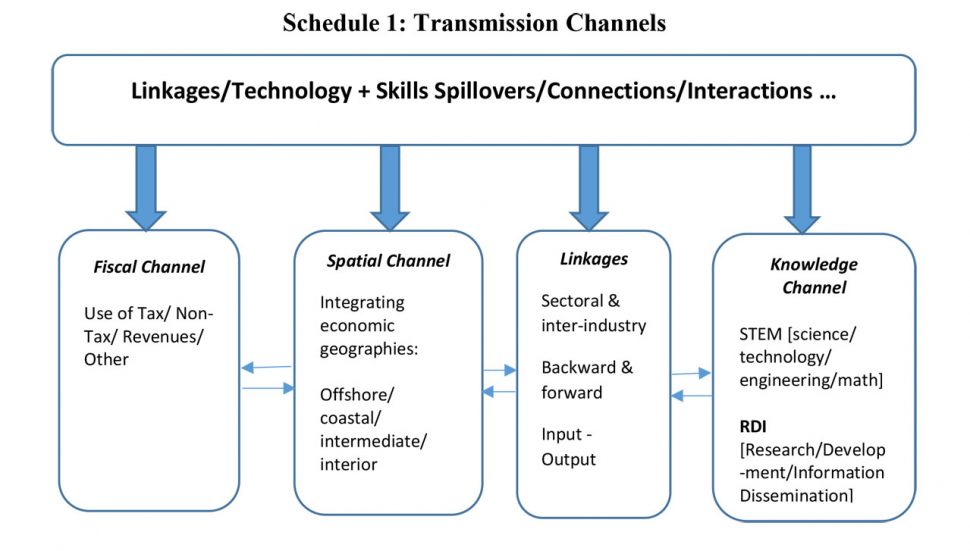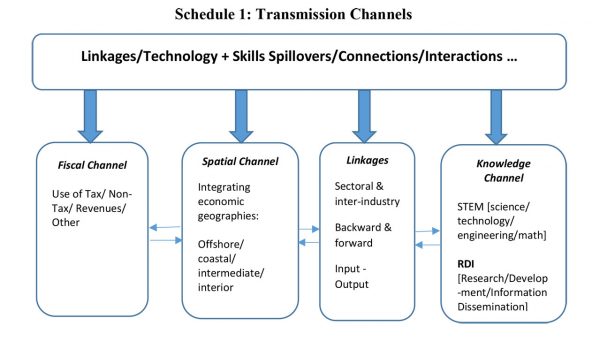This week, I conclude my discussion on the requirements for avoiding the perils of enclave-type development in Guyana’s economic structures.
Enclave Economy
There is general acknowledgement among development analysts that, over the past three decades, the notion of an enclave economy has largely evolved out of the spirited post-colonial and dependency school economic theorizing and debates. Additionally, of some significance, there is a legacy of Marxist scholarship. This latter observation is perhaps most apt, I believe, for the wider Latin American and Caribbean region.
From what I have introduced thus far in the discussion, it is clearer that, the notion of an enclave economy portrays an economic system where one or more well-capitalized foreign-owned firms extract primary products (particularly natural resources) for export to the rest of the world (and indeed principally to the region of the firm’s origin). There it is either directly consumed and/or further processed and re-exported. As this occurs, the enclave extractive firm maintains minimal linkages and connections to the rest of the domestic economy, which hosts it!
Where the economy is as small as Guyana’s is, this situation results in an economic system where what is produced is not significantly consumed domestically (either directly or indirectly). Indeed, as a rule, the country imports its needs for both direct and indirect consumption, along with the investment goods and services it requires. Such an enclave economy is distinguished by the peculiar fact of its not being integrated into the remainder of the domestic economy. However, it nevertheless remains closely integrated into the rest of the world!
Furthermore, one notes that in relation to the rest of the local economy, the enclave economy “crowds out” most, if not all other domestic sectors. Thus, for example, it commands the best of the locally available skilled labour. It also attracts the best of the educated, and trained population, if only because of the higher wages it can afford to pay.
Additionally, one can clearly discern that, the enclave sector is not only able to pay higher wages and salaries (thereby attracting the best of the skilled labour), but as a consequence of this, it achieves higher levels of technology transfer and adaptation! As a final rule, it also utilizes far superior technology (indeed one might say “global cutting-edge” technology) as well as far higher ratios of capital to output and investment, than the remainder of the local economy. Regrettably, the local economy represents the virtual opposite constellation of economic and structural circumstances to this. That is, low capital intensity, low wages, low productivity, low skills, and low technology transfer and adaptation prevails!
Linkages and Spillovers
Researchers who have studied these phenomena identify four sets of linkages and transmission channels through which public policy is directed at promoting linkages, spillovers, and connections in order to spread the economic benefits derived from enclaves to the remainder of the national economy. Schedule 1 attempts to depict these channels graphically. It is repeated from the earlier presentation.
The Schedule reveals:
1) a fiscal channel. In this channel, state revenues are mobilized and spent on activities beneficial to the development of the wider economy. 2) a spatial channel. This is where these revenues are dedicated to spatial integration. And, for Guyana, this means the integration of its four economic-geographic zones: the offshore, coastal, intermediate and interior clusters. 3) a knowledge channel. This channel captures training, education, research & development and the enhancement of skills-sets for the broader economy for the enclave sector and the extent to which this benefits the non-enclave sectors. And 4) inter-sectoral and inter-industrial linkages. These are recognized in the outputs/inputs/demand relations between all sectors.
If this prevails, then the enclave sector becomes integrated through those channels into the non-enclave sectors, rather than crowd them out.
Schedule 1: Transmission Channels
The Infant Industry Connection
Readers must bear in mind that policies designed to promote the development and expansion of “infant industries” that are to be located in the non-enclave sectors, are essentially policies favouring protectionism, as an essential ingredient of sustainable development policies. Typically, such protection is designed for application at the early infant stages of business and firm growth. This is to enable these firms/businesses to survive up to a stage where their capacity is strengthened (by economies of scale and scope), allowing them to survive in a competitive environment and consequently benefit, not suffer, from trade expansion.
I had in the earlier treatment of this topic observed that based on my private exchanges in Guyana, the following quote may surprise some readers: Ha-Joon Chang, the development expert, has pointed out that “Almost all of today’s rich countries used tariff protection and subsidies to develop their industries.” Indeed, I go further and argue that almost all countries, rich and poor, developed and developing, industrialized and non-industrialized, and located in every geographic region continue, up to today, to promote the development of their local industries through local content requirements!
This continues to occur, despite the fact that, developing countries are continuously taught (lectured!) on the dangers of protectionism! These dangers are indeed real, and should not therefore be brushed aside. In particular, I believe the greatest danger is what economists term as the rise of “rent-seeking” behaviours. Such behaviours threaten economic progress in all protective environments, because they crowd-out competitive incentives.
Conclusion
Next week I turn to the next topic on the list of top-ten development challenges. That is the persistence of “implementation lags” in the coming on-stream of Guyana’s petroleum sector.



